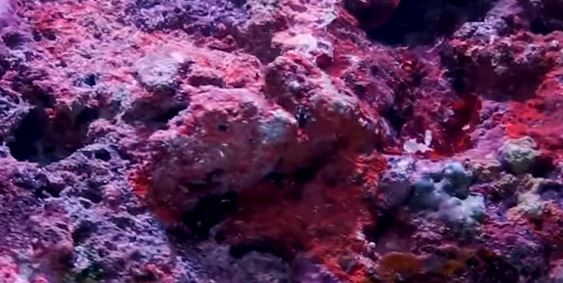
How To Cure Live Rock For Your Reef Tank
One of the most important and essential things to put into a new saltwater reef tank is live rock, and it is very important that you learn how to cure live rock before you add it to your tank. Even if you add it in an established tank, it still needs to be cured properly.
Failure to do this can result in ammonia and toxic compounds being released and this can reek havoc on your tanks environment. If you need to find out how much rock you need, check this out.
Why Do I Need To Cure Live Rock Before Adding It To My Saltwater Aquarium?
Dry Live rock that comes from the ocean or another tank at one time had many organisms on it like sponges, etc. Those organisms die and dry up on the rock, and when reintroduced to a wet environment, they can decay. This decay will release nutrients and can cause a spike in ammonia. This is obviously very bad in an established tank and it can cause problems when starting a new tank.
It can cause your water to turn yellow and it can make your aquarium smell awful. It can create ammonia spikes can kill your fish and corals, and an increase in nutrients can introduce algae which is another problem in itself. In addition, your rocks may leak a lot of phosphate in your tank which will cause green hair algae.
Some people choose not to cure rock before putting into a new tank with no fish or corals in it because you are trying to introduce ammonia and nutrients to help the tank cycle. Personally, I have found that curing rock before a new tank is better because I have had less issues with algae, etc., and the tank cycles fine regardless. Is it pertinent to cure rock before adding to a new tank? Not really, but it doesn’t hurt except for time. Although, if you are impatient, this is not the hobby for you.
So now that we know why it is a good idea, we can look at the steps it takes to cure your live rock for your display tank.
What Type of Rock Do I Need To Cure?
Dry Live Rock absolutely needs to be cured for the reasons we mentioned above. For wet live rock that you get from a friends tank or from a local fish store, there are mixed reviews on the necessity to cure it. An example of this is Pukani rock.
The main reason that people purchase wet rock and pay more for it is because it is loaded with beneficial things like coralline algae and bacteria. Curing it in a dark bucket for weeks is going to get rid of some of the beneficial things.
Dry mined rock is one of the most common types of available. It is basically old reef that has been mined. Generally there are no organics on it, so it is not necessary to cure it. However, it is a good idea to soak it for a week with a powerhead on it to loosen all the sand and debris on it.
Artificial rock or man made rock also does not need to be cured. It is a good idea to soak it for awhile since it is manufactured.
Steps To Cure Live Rock For Your Reef Tank
- Get a large plastic bucket or trash can that can be covered. A Rubbermaid brute trash can or any other reef safe tub will work. You could also use an aquarium.
- Add your rocks and add enough saltwater to cover them. It’s best to use RODI water. Make sure you have an appropriate salinity measurement.
- For best results, add a heater and powerhead. Make sure the heater will not be in a place to get crushed or cracked as the rocks will settle and move. Heat to around 78 degrees.
- To reduce total cure time, add Dr. Tim’s One & Only Live Nitrifying Bacteria. Not a necessity, but will speed up the process. Another option is DrTim’s Aquatics Waste-Away Natural Aquarium Cleaner which contains more aggressive bacteria.
- Now that you have everything in your container, add a dark plastic covering or place a lid over it. Do not completely seal it tight.
- Wait 4-12 weeks.
- Monitor you Nitrates and phosphates after 4 weeks once a week and your rock should be ready after your levels stop rising
- As an optional step you can do a complete water change and monitor the nitrate levels over a week, and if they stat the same you are good to go.
- You can remove your rock
Conclusion
It is very important that you cure dry live rock before adding it to your tank. The steps listed above are a general guideline, and if you need to make subtle changes that will work as well.
An example of that would be, if you feel like your water is overly stinky and very yellow after 4-5 weeks, you can do a 50% water change. You can also do this every couple of weeks as well until your cure is done.
If you choose not to use Dr. Tim’s or a product like that, you will likely need to cure for around 10-12 weeks. Also, a good tip for your saltwater mix is that it does not really matter what brand you use, so feel free to use some that has a lower price point. It doesn’t have to be the brand that you are using for your display tank.
Keeping your temperature around 78 degrees helps beneficial bacteria proliferate, so heating your water will also reduce the total time to cure as well.
